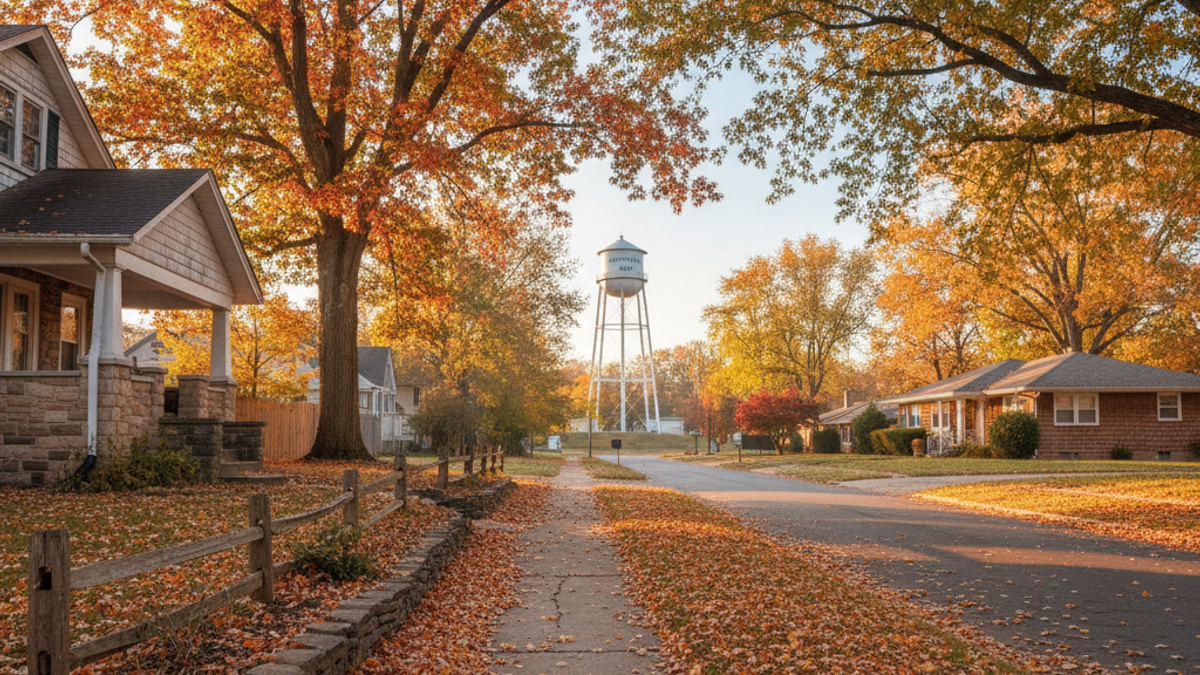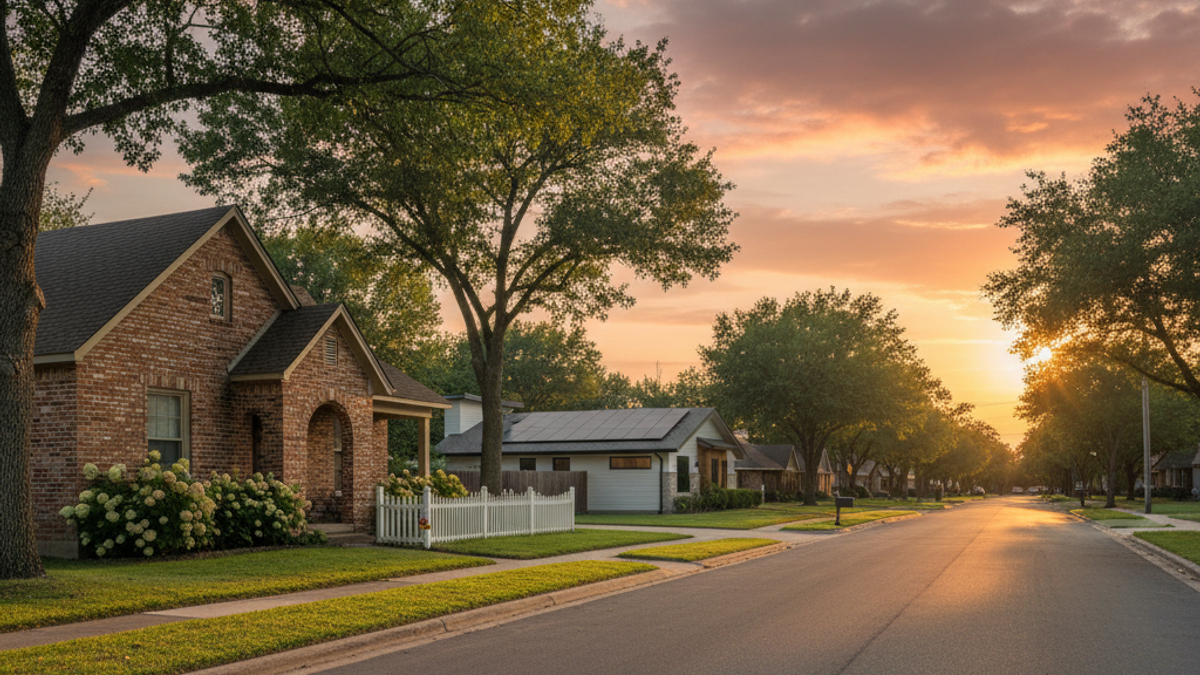A Quick Pulse Check on Winter Park, MO
Blink and you might miss it on a map, yet Winter Park sits only thirty minutes southwest of Columbia. Fewer than 11,000 neighbors share its rolling hills and tall oaks. The 2025 census update shows a modest bump of two percent since 2020, mostly remote workers hunting for elbow room. Median home price in January 2025 landed at $376,000, up a steady four point two percent year over year. Listings linger an average of forty-six days before someone snags the keys. Roughly forty percent of sales spark at least one competing offer. People are not stampeding in, but the trend arrow tilts upward. So, should you join the trickle or keep scrolling Zillow somewhere else?
What Feels Great About Life Here
That small-town nod
Step into the Corner Cup coffee shop. Strangers look up, give an easy nod, then go back to laptops or cinnamon rolls. It happens at the farmers market, the feed store, the Friday food-truck rally. You get noticed in Winter Park. Not judged, just noticed. That feels good.
Outdoor playground without the crowds
Two public lakes, Millstone and Clear Hollow, sit less than ten minutes apart. Millstone stays calm enough for sunrise paddleboarding. Clear Hollow draws anglers after crappie or largemouth but still leaves plenty of shoreline for kids who just want to skip rocks. Ten miles of multi-use trails braid through Hazel Ridge Forest Preserve, and you rarely hear more than birds, bikes, and your own heartbeat. You can camp, you can forage mushrooms in spring, you can spot fireflies the old-fashioned way by simply walking outside at dusk.
Hidden economy perks
Columbia grabs headlines, yet Winter Park quietly hosts three precision-manufacturing firms that supply farm equipment nationwide. Average wage at those plants hits $29 per hour plus decent healthcare. Remote workers latch onto the fiber loop installed in 2023. One gig symmetrical, no throttling, sixty-nine bucks a month. Try finding that sweet of a deal in St. Louis.
Schools that feel personal
Elementary students share gardens instead of test-prep packets. Fourth graders grow collard greens, harvest, then learn cooking basics in the cafeteria. High schoolers choose between dual-credit welding or cybersecurity classes, both taught by instructors who know them by first and middle names. Average class size sits at seventeen. Guidance counselors track every junior’s post-graduation plan without needing spreadsheets. Test scores? Solid, not flashy. The real bragging rights are the mentorship hours that business owners log with kids after school.
Culture, yes culture
Third-Saturday bluegrass jams fill Heritage Barn May through October. The Winter Park Writers Guild meets above the library and publishes an annual anthology of local stories. Foodies drift to Birch & Barley for mushroom-gorgonzola flatbread that rivals anything you tried in Portland. Art studios throw open doors every first Friday. It is not highbrow, it is handmade, and it hits the soul just right.
Breathing space for the budget
Property taxes run ninety-three cents per hundred dollars of assessed value. Water bills average thirty-four dollars a month, even in July. A downtown parking ticket costs ten bucks, mostly because leadership would rather see you explore than stress.
The vibe you cannot Google
Picture twilight over cornfields, lightning bugs blinking like Morse code, and the faint hum of a porch fan. Nobody speeds past at 2 a.m. You sleep with windows cracked. That is the un-quantifiable pro, the one that hooks newcomers harder than any spreadsheet.
What Might Bug You
Housing supply, or lack of it
Yes, the median sits near $376,000, yet that figure hides a crunch. Only forty-eight homes closed in the first quarter of 2025. New construction skews to three-bed, three-bath craftsman styles that start just below $500K, which prices out plenty of first-time buyers. Want a fixer upper under $250K? You will stalk listings like a hawk, pounce within hours, and still face a bidding war. Renters do not get it easier. Fewer than three hundred rental doors exist inside city limits, and half are spoken for through word of mouth before they ever hit an online portal.
Car is king
No local bus loop. No light rail. Ride-share coverage fades after 10 p.m. One grocery trip typically means a car, maybe a trusty bike with saddlebags. Commuters aiming for Columbia slog through twenty-seven miles of two-lane asphalt that narrows to a crawl behind grain trucks in harvest season. Gas stations stay open, sure, but EV drivers count exactly two public chargers in town, both tucked behind City Hall and usually occupied.
Weather that flips a switch
Mid-Missouri likes drama. April dishes tornado watches, July bakes at ninety-five with jungle-level humidity, and January stoops to single digits. Snow removal happens, though side streets often wait until midday. Utility bills spike mid-summer and mid-winter. The upside is four true seasons. The downside is four true seasons.
Limited nightlife
Do not expect a midnight tapas bar. Last call at The Hitching Post lands at 11 p.m. on weekends, earlier Sunday through Thursday. The indie cinema closed in 2022. Live music still pops up at Heritage Barn and sometimes at Puckett’s Taproom, yet you will burn gas if you crave an arena show or big-screen blockbuster.
Growth pains
City Council hustles to keep infrastructure in step. A second water tower breaks ground in 2026. Cell coverage near Hazel Ridge still dips to one bar. Some residents worry about losing that small-town soul once the new business park fills. Others wonder if leadership can balance budget realities with the demand for sidewalks, bike lanes, and broader zoning. The tension hangs in the air at council meetings.
Health-care access
Urgent-care clinic for stitches or strep throat, yes. Full hospital, no. The closest ER sits nineteen miles away in Ashland. Specialists? Plan a forty-minute drive into Columbia or Jefferson City. Tele-health bridges gaps for minor issues, but people with chronic conditions might find the commute exhausting.
Diversity of shopping
Hardware, groceries, farm supply, adorable boutique for hand-poured candles, done. Big-box retailers require a half-hour drive. Prime delivery hits in two days, sometimes three, depending on weather. If retail therapy helps your stress level, you will adjust or you will drive.
Time to Process All That
Winter Park offers that front-porch wave, those starlit skies, and a cost profile softer than many suburbs circling Kansas City or St. Louis. You trade late-night sushi and robust public transit for acreage, personal hellos at the café, and a shot at a slower pulse. Housing supply can frustrate, storms might rattle windows, yet neighbors show up with chainsaws and chili when the power blinks out. So, picture your non-negotiables. If breathing room tops the list, Winter Park waits. If buzz and convenience rule, keep the search rolling. No shame either way.
Quick-Hit FAQs
1. How many people live in Winter Park right now?
Current city records list 10,982 residents, a gain of about two percent since 2020.
2. Are home prices still climbing?
They are nudging up four to five percent per year, slower than the post-pandemic surge yet still higher than the statewide average of three percent.
3. What job sectors hire the most?
Precision manufacturing, ag-tech startups spinning out of the University of Missouri, plus a surprising number of remote software roles thanks to the fiber loop.
4. How long does it take to drive to Columbia during rush hour?
Plan on forty minutes door to door if you roll out between 7 and 8 a.m. Shave ten minutes if you leave earlier.
5. Does the town host any standout events?
Yes. WinterFest lights up Main Street every first Saturday in December, and the Millstone Paddle Classic lures kayakers from three states each June.
6. Any big developments on the horizon?
A six-acre business park breaks ground this summer. City Hall projects sixty-five new jobs and a two-million-dollar bump in annual tax revenue when fully occupied.
7. How strong is the internet service for remote work?
Fiber delivers one gig up and down across ninety-five percent of addresses. Outlying farmsteads lean on fixed wireless that clocks around fifty megabits.
That covers the real-world pros and cons of Winter Park. Map your priorities, run your numbers, then trust your gut. You got this.





